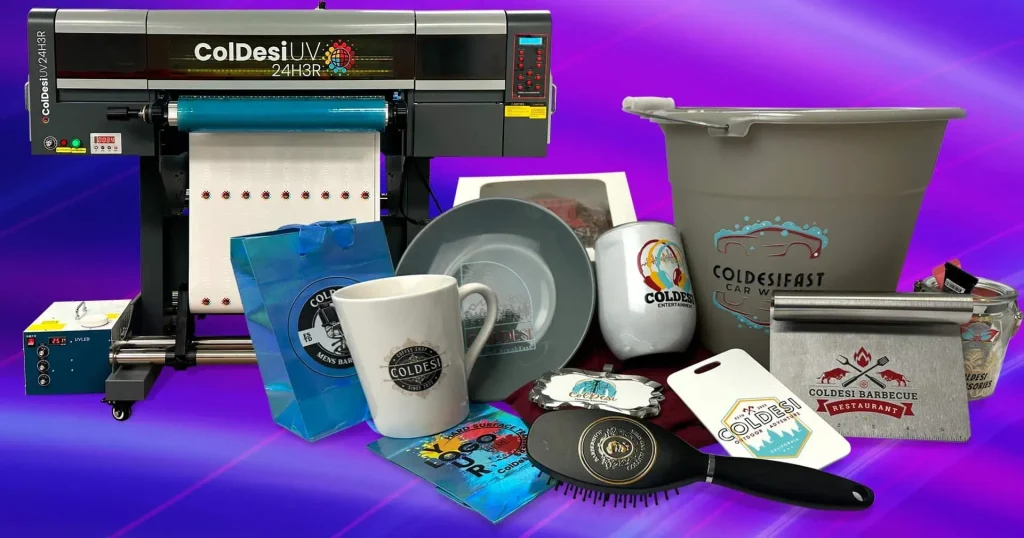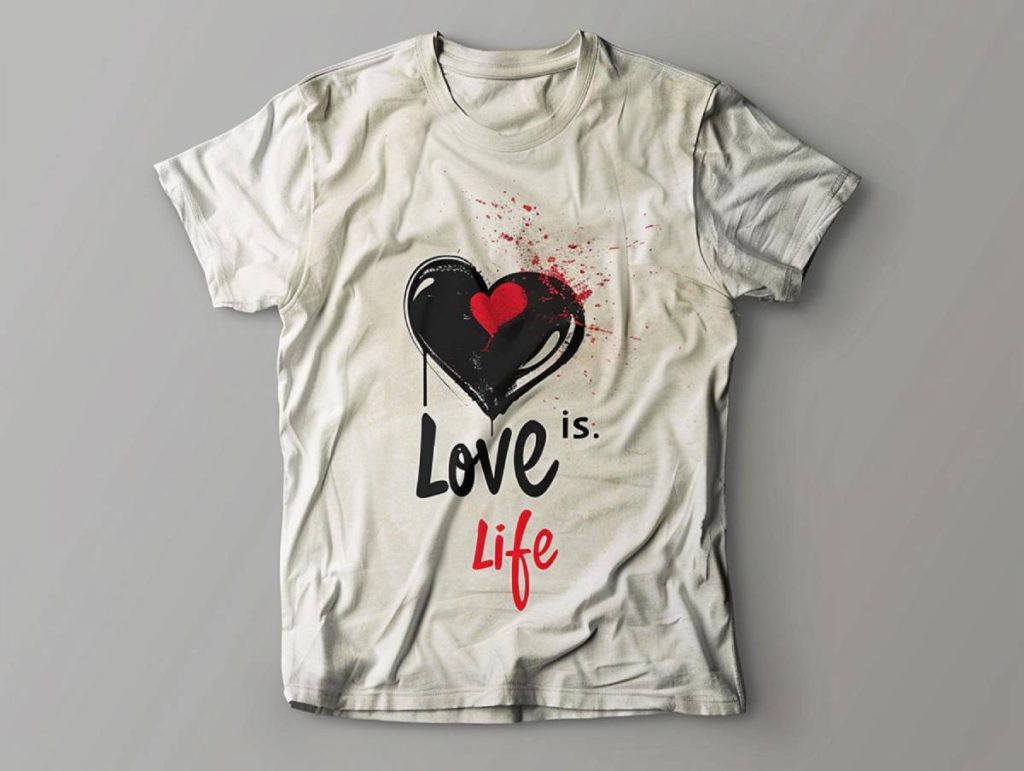UV DTF printing, or Direct to Film printing, is revolutionizing the printing industry with its advanced technology that delivers remarkable quality and versatility for creators and businesses. This cutting-edge method utilizes ultraviolet curing to produce vibrant, durable prints on various surfaces, including textiles, glass, metal, and more. The benefits of UV DTF printing extend beyond mere aesthetics; it offers enhanced durability, making it ideal for custom apparel printing and promotional products that require long-lasting designs. With growing interest in sustainable printing practices, UV DTF technology takes a forward-thinking approach, utilizing eco-friendly inks that comply with environmental standards. In this blog post, we will delve into the key applications and advantages of UV DTF printing, equipping you with the knowledge to maximize your design potential.
Direct to Film (DTF) printing using ultraviolet curing technology has transformed how we approach design and printing solutions. This innovative approach provides a myriad of advantages, including exceptional quality and the ability to print diversely on both rigid and flexible materials. Businesses seeking to enhance their product offerings can tap into the thriving market for custom apparel printing, leveraging this technique to produce unique, eye-catching designs. Moreover, with the increasing emphasis on eco-friendly methods, sustainable printing initiatives are being integrated into the UV DTF process, enabling conscientious production practices. As we explore the multifaceted applications and impactful benefits of this advanced printing method, you will discover the transformative potential it holds for your creative projects.
The Advantages of UV DTF Printing Technologies
UV DTF printing offers numerous advantages that set it apart from traditional printing methods. One of its most notable benefits is the high-quality output it produces. The UV curing process ensures that colors are vibrant and consistent, resulting in prints that look sharp and professional. Additionally, the durability of the prints is a significant advantage; UV-cured inks are resistant to fading, scratching, and even water, making them ideal for both indoor and outdoor applications.
Another key advantage of UV DTF printing is its versatility. This technology is compatible with a wide range of substrates, from fabric and textiles to rigid surfaces like metal and glass. This very flexibility allows businesses to expand their product offerings significantly. Furthermore, the ease of customization available through UV DTF printing means that designers can achieve intricate details without compromising on quality or efficiency.
Exploring Sustainable UV DTF Printing Practices
Sustainability is increasingly becoming a priority in all sectors, including print manufacturing. UV DTF printing aligns with sustainable practices by utilizing eco-friendly inks that comply with stringent environmental standards. These inks typically have a lower volatile organic compound (VOC) content, contributing to healthier indoor air quality and less environmental impact during production.
Moreover, by investing in UV DTF printing technologies that emphasize sustainability, businesses can not only appeal to eco-conscious consumers but also reduce waste associated with traditional printing methods. The efficiency of UV curing—where inks cure almost instantly—helps minimize overuse of materials, leading to less waste. Thus, implementing sustainable practices can enhance brand image while also supporting environmental stewardship.
Versatile Applications of UV DTF Printing
The applications of UV DTF printing are diverse and span several industries. In the custom apparel sector, for instance, this technology enables designers to create eye-catching graphics and intricate patterns on fabrics. The durability of UV inks ensures that these designs remain vibrant after multiple washes, making them ideal for athletic wear and promotional clothing.
Beyond clothing, UV DTF printing is making waves in the promotional products market. Items such as mugs, phone cases, and custom stationery can now showcase high-resolution prints that enhance brand recognition and appeal. With the ability to customize promotional items sharply and affordably, companies can produce personalized giveaways that truly resonate with their audience.
Maximizing Design Quality with UV DTF Printing
To achieve outstanding results with UV DTF printing, designers must prioritize the quality of their input files. Using high-resolution images and vector graphics is crucial; these elements ensure that the final prints maintain clarity and detail, avoiding issues such as pixelation. Additionally, experimenting with color settings can lead to more vibrant output, maximizing the effectiveness of the UV-cured inks.
It’s also essential to understand the properties of different substrates when utilizing UV DTF printing. Each material reacts uniquely with UV inks, which can influence the overall result. Consider performing test prints to ascertain how inks adhere to various surfaces and how colors appear once cured. This proactive approach can help refine the design process, ensuring that the final products exceed expectations.
The Future of UV DTF Printing: Innovations and Trends
As technology continues to advance, UV DTF printing is poised for exciting developments that will further enhance its capabilities. Innovations in ink formulations are on the horizon, with manufacturers striving for even higher eco-compatibility and performance. This means that the inks will not only become more vibrant and durable but also more sustainable, aligning with the growing demand for eco-friendly products.
Additionally, automation and software improvements in UV DTF printers promise to streamline operations, reducing the time it takes to transition from design to finished product. Such advancements will make the technology more accessible to smaller businesses, allowing them to compete in the custom product market more effectively. Keeping an eye on these trends will help designers and companies leverage new opportunities stemming from the evolution of UV DTF printing.
Best Practices for Successful UV DTF Printing
Implementing best practices in UV DTF printing can significantly enhance the overall quality of the final product. One of the key strategies is to utilize a color calibration system to ensure that the colors in the design are accurately represented in the printed output. This step is vital, as it allows designers to match their expectations with the reality of the print results, minimizing waste and ensuring client satisfaction.
Another best practice is to continuously update your knowledge and skills about the technology. As UV DTF printing evolves, new techniques, materials, and software solutions become available. Attending workshops, following industry news, and experimenting with new techniques will keep designers sharp and ready to deliver outstanding results in an ever-competitive market.
Frequently Asked Questions
What is UV DTF printing and how does it work?
UV DTF printing, or UV Direct to Film printing, utilizes ultraviolet light to cure inks instantly on various substrates. This process allows for vibrant and durable prints, enabling designers to create intricate designs on materials ranging from textiles to hard surfaces.
What are the benefits of UV DTF printing over traditional printing methods?
The benefits of UV DTF printing include enhanced color vibrancy, instant curing for quick production, and compatibility with a wide range of materials. Additionally, it offers greater durability, making prints resistant to fading and wear over time compared to traditional inkjet methods.
What applications can benefit from UV DTF printing?
UV DTF printing is versatile and can be applied in various fields such as custom apparel printing, promotional products, signage, and displays. Its ability to produce high-quality prints on diverse substrates opens up opportunities for personalized and unique product offerings.
How does UV DTF printing contribute to sustainable printing practices?
UV DTF printing contributes to sustainable printing by utilizing eco-friendly UV inks that comply with environmental standards. This technology reduces harmful emissions and relies on energy-efficient curing processes, allowing businesses to appeal to environmentally conscious consumers.
Can UV DTF printing be used for custom apparel?
Yes, UV DTF printing is ideal for custom apparel, especially in producing vibrant and intricate designs on garments. The durability of UV inks ensures that prints withstand washes and maintain their vibrancy over time, making them perfect for athletic and casual wear.
What are the best practices for maximizing designs in UV DTF printing?
To maximize designs in UV DTF printing, experiment with color settings, choose the right substrate, use high-resolution images, conduct test prints, and stay updated on industry trends. These practices help achieve optimal results while enhancing the overall quality of the printed products.
| Key Points | Details |
|---|---|
| UV DTF Printing Overview | Emerges as a game-changer offering quality and versatility, using UV curing for vibrant prints on various surfaces. |
| Key Developments | 1. Enhanced Color Vibrancy and Longevity: UV inks ensure sharp details and resist fading; perfect for outdoor applications. 2. Expanding Material Compatibility: Can print on wood, metal, glass, and more; allows diverse product offerings. 3. User-Friendly Technologies: Simplified interfaces and controls promote ease of use. 4. Sustainability Initiatives: New eco-friendly UV ink formulations appeal to environmentally conscious customers. |
| Applications | 1. Custom Apparel: Intricate, durable designs withstand washing; suitable for the athletic wear sector. 2. Promotional Products: High-quality, personalized prints increase brand visibility and customer connections. 3. Signage and Displays: Creates visually striking signs that effectively communicate in various settings. |
| Maximizing Designs | 1. Experiment with color settings for vibrant outcomes. 2. Choose appropriate substrates for best results. 3. Use high-resolution images for clear prints. 4. Conduct test prints to verify designs. 5. Stay updated on trends in UV DTF printing. |
Summary
UV DTF printing techniques provide a transformative approach to design and manufacturing, unlocking unparalleled creative potential. This innovative technology not only enables designers to create vibrant, durable prints on a plethora of materials, but also supports a growing demand for sustainable practices in the industry. By incorporating UV DTF printing into your workflow, you can enhance product quality, diversify offerings, and ultimately, meet the evolving needs of customers. Embracing these advancements can position your business at the forefront of the printing market, ensuring you stay competitive and relevant in a rapidly changing landscape.



